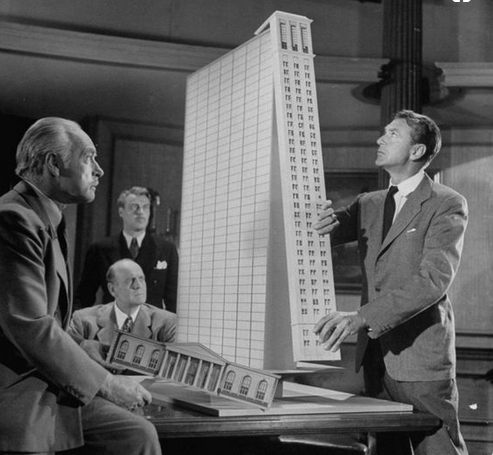Howard Roark has been one fictional character who has had a great influence on my life. Ayn Rand’s young architect, who defied the worldly norms and dared to create functional structures discarding the Gothic designs for the want of real value, stood as an ideal hero in the non-ideal world. Since then, whenever I saw a building being built and a structure being erected I thought of him and how he would have reacted when he saw the building through his architectural sensibilities.
The prevailing approach to design of the modern urban built environment has encouraged massive transformation and degradation of natural systems thereby increasing human separation from the natural world. This design paradigm has resulted in unsustainable energy and resource consumption, major biodiversity loss, widespread chemical pollution, contamination, extensive atmospheric degradation and: climate change, and human alienation from nature.
With the growing need towards sustainable energy structures and ‘green buildings’ we need more Howard Roarks but perhaps with a different set of sensibility — the one who would be able to design a system of building structures which will brings conservation of nature and natural resources back into focus something which Biophilic Designs intend to do.

Image Source : terrapinbrightgreen.com
Biophilic
design is the deliberate attempt to translate an understanding of the
inherent human affinity to affiliate with natural systems and
processes-known as biophilia (V’Tilson 1984, Kellert and Wilson 1993)
The biophilic design works on the attributes which are set to enhance the overall well-being of human beings and nature. Late Stephen R. Kellert, a revered professor of social ecology at the Yale School of Forestry & Environmental Studies (F&ES) who helped pioneer the theory of “biophilia” argued that the satisfaction of our biophilic urges is related to human health, productivity, and well-being. Some of Kellert’s findings are noteworthy. He states that :
• Contact with nature has been found to enhance healing and recovery from illness and major surgical procedures, including direct contact (e.g., natural lighting, vegetation), as well as representational and symbolic depictions of nature (e.g., pictures).
• People living in proximity to open spaces report fewer health and social problems, and this has been identified independent of rural and urban residence, level of education, and income. Even the presence of limited amounts of vegetation such as grass and a few trees has been correlated with enhanced coping and adaptive behavior.
• Office settings with natural lighting, natural ventilation, and other environmental features result in improved worker performance, lower stress, and greater motivation.
• Contact with nature has been linked to cognitive functioning on tasks requiring concentration and memory.
• Healthy childhood maturation and development has been correlated with contact with natural features and settings.
• The human brain responds functionally to sensory patterns and cues emanating from the natural environment.
• Communities with higher-quality environments reveal more positive valuations of nature, superior quality of life, greater neighborliness, and a stronger sense of place than communities of lower environmental quality. These findings also occur in poor urban as well as more affluent and suburban neighborhoods.
These studies provide scientific support for the ancient assumption that contact with nature is critical to human functioning, health, and well-being. The dimensions, elements, and attributes of biophilic design have been adopted by U.S. Green Building Council’s LEED rating approach which is used to ascertain certifications to sustainable green buildings.
Despite the efforts for Biophilic design to become a reality it needs champions and architects to push for structures which would create structures which are closer to nature and promote overall well-being.


